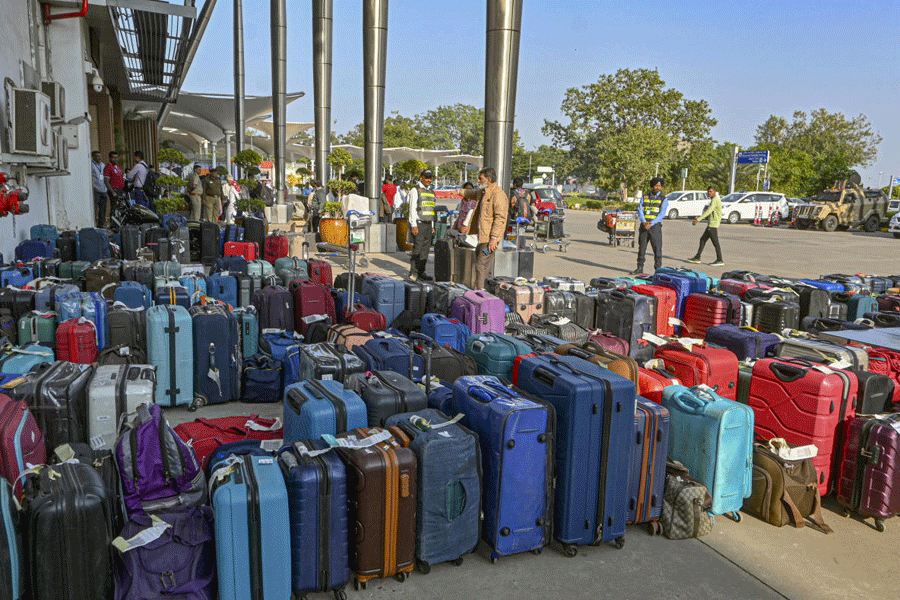
New Delhi, June 20: A serious scientific paper written by celebrated Indian physicist Ashoke Sen in Hollywood-style language nearly boomeranged on him with some viewing it as a prank centred around April Fools' Day.
But fellow physicists aren't really surprised.
When Sen, immersed in a topic so deeply mathematical and complex that at times it leaves even his peers with questions, writes a paper with words such as "doomsday", "catastrophe" and "end of our species", trouble can brew.
Sen, who teaches at the Harish Chandra Research Institute, Allahabad, is among the vanguard of physicists developing a set of mathematical ideas collectively called string theory that seeks to unite two fundamental theories of physics: quantum mechanics, which reigns in the subatomic world, and gravity, which dominates space-time and the cosmos.
Over two decades of research, Sen has made several original contributions to string theory and received multiple awards - the Infosys Prize in 2009, the Fundamental Physics Prize in 2012, and the Dirac Medal in 2014.
But earlier this year, Sen posted on a research archive an eight-page paper that outlined a strategy through which descendants of present-day humans might evade an end of civilisation triggered by an abrupt destruction of the universe.
Ideas emerging from string theory suggest that the observed universe is only one among an unimaginably large number of what physicists call "phases" - and that, at times, a change in phase may occur, leading to the decay of the universe.
"This has a sinister consequence," Sen wrote in his paper. "It shows that we cannot exist forever. Sooner or later, in some part of the universe, a bubble of another phase... will form which will subsequently expand and destroy us."
Given the age of the universe - 13.8 billion years - Sen has calculated that the probability of such a calamity hitting the Earth within the next one year is less than one part in ten billion.
"The actual probability may be much smaller. Nevertheless, if we wait long enough we are bound to encounter doomsday sometime in the future unless other calamities have destroyed us by then," he wrote.
Sen has drawn on cosmological observations to propose an escape strategy. "The essential idea is simple, we must spread out as fast as possible, establishing civilisations on different worlds in different parts of the universe, so that even if some of us are hit by the catastrophe, others may survive," he said.
Astronomers have known for decades that the universe is expanding. And since the late 1990s, observations have suggested that the speed of the expansion has been increasing.
Sen has suggested that this accelerating universe can over time separate different regions of the universe at such great speed and to such great distances that light from one region cannot reach another region.
Physicists familiar with Sen's paper say the proposal is to establish outposts of civilisation in regions so distant that a destructive phase-changing seed that spreads outward like a bubble in one region will not be able to catch up with regions too far away for even light to reach.
"The laws of physics dictate that these destructive bubbles cannot move faster than the speed of light, or 300,000km per second," Rajesh Gopakumar, a string theory scientist at the International Centre for Theoretical Sciences (ICTS), Bangalore, said.
"But the accelerating universe could take some regions beyond the reach of the bubbles," Gopakumar said.
Sen's paper says that as the bubble spreads at the speed of light, humans will experience a painless death.
"We shall not even know the existence of the bubble before it hits us. However, this will definitely be the end of our species and the universe around us," Sen wrote.
But when Sen's paper hit the research archive, some speculated it was a hoax.
"What I'm hearing is that no one can believe that Sen could possibly have seriously written something this silly, so it must be some sort of hoax," Peter Woit, a mathematician at Columbia University in the US, wrote on his blogpost.
"Speculation is that the hoax could have been carried out to make the (archive) moderators look bad, by showing that they'll agree to anything, no matter how absurd, if it invokes the landscape (of phases) and the multiverse."
One commentator on Woit's blogpost called the paper, posted on the archive on March 27, "garbage". Another interpreted it as an April Fools' Day joke; still another called it "some kind of popular, quasi sci-fi essay for a general audience".
Sen agrees he wrote the essay, as he calls it, in a manner accessible to a general audience, but says he ensured that its physics content was completely correct.
"The physical principles used in writing the essay are completely standard laws of quantum mechanics, field theory and the general theory of relativity," Sen told The Telegraph.
"There was no connection at all with the date (April 1) - I submitted (the essay) when I finished writing the paper."
Sen will present a far more mathematical version of his paper at Strings 2015, the 21st annual conference of string theory opening in Bangalore on Monday, hosted by the ICTS and expected to draw over 300 physicists from across the world.
In his paper, Sen said the descendants of modern humans would need to reach and establish civilisations on different and distant worlds within a radius of 10 billion light years.
The accelerating universe will pull these worlds apart from each other. But since bubbles can emerge anywhere, each of these civilisations would need to spread out and establish new ones to ensure the survival of the species, Sen said.
"A bubble is an object with a constant speed and thus cannot catch up with a distant accelerating world that is far enough to start with and has been accelerating long enough," said Dileep Jatkar, professor of physics at the Harish Chandra Research Institute.
"I think the responses to the paper amused us," said Jatkar, who is among researchers trying to unravel the mechanisms through which the destruction of the universe may occur.
"The principles in the paper are deeply grounded in hard science. But sometimes physicists too need to have some fun."










